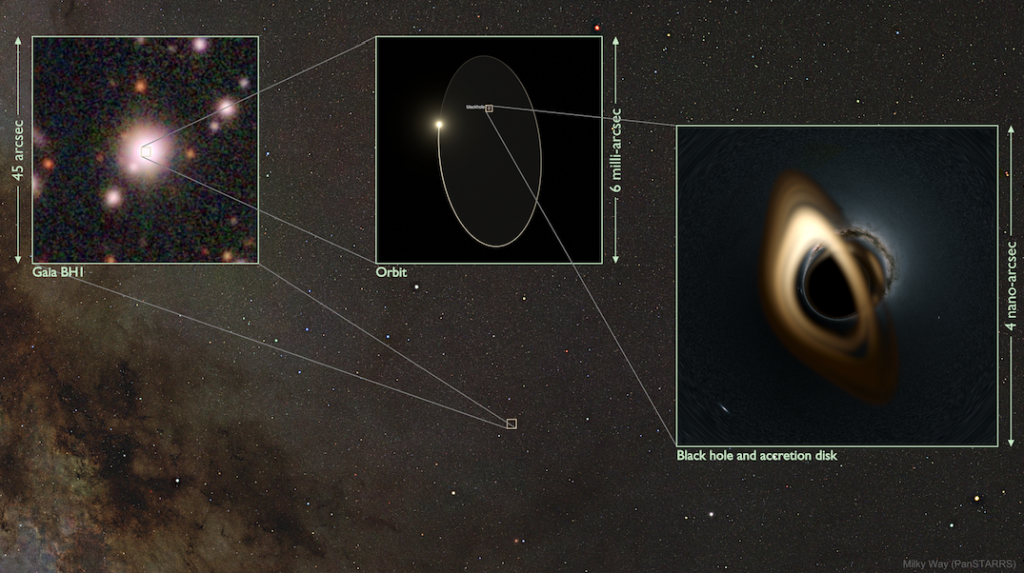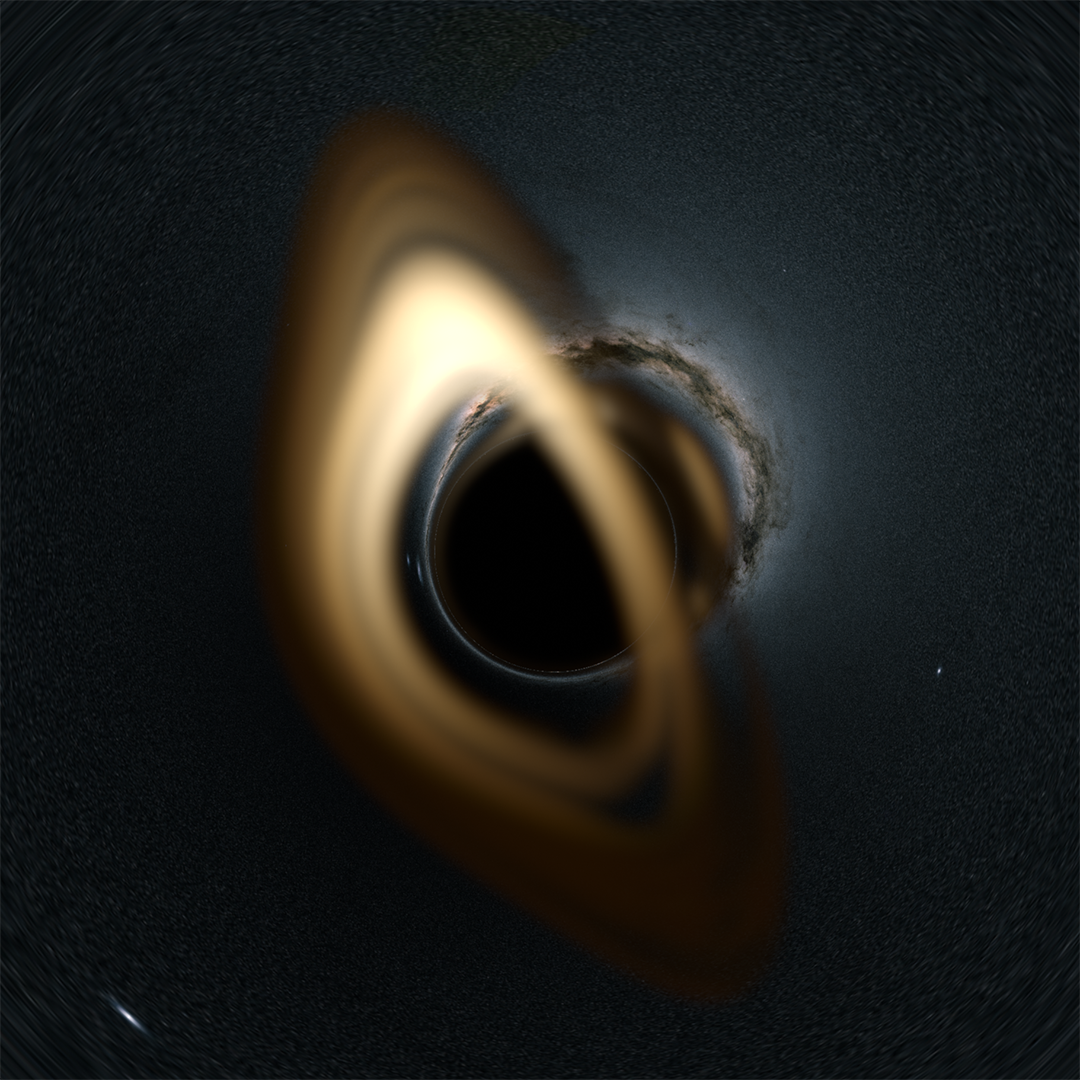Maunakea, Hawaiʻi – Astronomers using two Maunakea Observatories, W. M. Keck Observatory and the Gemini North telescope, have found the closest known black hole to our planet. Located a mere 1,560 light-years away from Earth in the constellation Ophiuchus, the black hole, named Gaia BH1, is three times closer to us than the previous record-holder.
The new study, which includes data from Keck Observatory’s High-Resolution Echelle Spectrometer (HIRES) and Echellette Spectrograph and Imager (ESI), is published in the journal Monthly Notices of the Royal Astronomical Society.
A research team led by the Max Planck Institute for Astronomy (MPIA) made the discovery by tracking Gaia BH1’s companion – a bright Sun-like star that orbits the black hole once every 185.6 days at about the same distance as the Earth orbits the Sun.
“Take the solar system, put a black hole where the Sun is, and the Sun where the Earth is, and you get this system,” said lead author Kareem El-Badry, an astrophysicist at MPIA and the Harvard & Smithsonian Center for Astrophysics. “While there have been many claimed detections of systems like this, almost all these discoveries have subsequently been refuted. This is the first unambiguous detection of a Sun-like star in a wide orbit around a stellar-mass black hole in our galaxy.”
Stellar-mass black holes form when dying massive stars collapse in on themselves. To find these dark, hard-to-detect objects, El-Badry’s team combed through data from the European Space Agency’s (ESA) Gaia spacecraft, which is designed to measure the motion of one billion stars in the Milky Way as they orbit around the center of our galaxy.
One star’s behavior caught the team’s attention; its orbit was larger than expected for its orbital period, suggesting the presence of a massive, unseen companion. For a more detailed look, the researchers conducted follow-up observations at several ground-based telescopes, including Gemini North and Keck Observatory in Hawaiʻi, and determined the star’s companion is a black hole that is 10 times more massive than the Sun.
“I have been searching for a system like Gaia BH1 for the last four years, trying all kinds of methods – but none of them worked,” said El-Badry. “It has been elating to see this search finally bear fruit.”
Learn more:
- Max Planck Institute for Astronomy Press Release
- International Gemini Observatory, operated by NSF’s NOIR Lab, Press Release

ABOUT HIRES
The High-Resolution Echelle Spectrometer (HIRES) produces spectra of single objects at very high spectral resolution, yet covering a wide wavelength range. It does this by separating the light into many “stripes” of spectra stacked across a mosaic of three large CCD detectors. HIRES is famous for finding exoplanets. Astronomers also use HIRES to study important astrophysical phenomena like distant galaxies and quasars, and find cosmological clues about the structure of the early universe, just after the Big Bang.
ABOUT ESI
The Echellette Spectrograph and Imager (ESI) is a medium-resolution visible-light spectrograph that records spectra from 0.39 to 1.1 microns in each exposure. Built at UCO/Lick Observatory by a team led by Prof. Joe Miller, ESI also has a low-resolution mode and can image in a 2 x 8 arc min field of view. An upgrade provided an integral field unit that can provide spectra everywhere across a small, 5.7 x4.0 arc sec field. Astronomers have found a number of uses for ESI, from observing the cosmological effects of weak gravitational lensing to searching for the most metal-poor stars in our galaxy.
ABOUT W. M. KECK OBSERVATORY
The W. M. Keck Observatory telescopes are among the most scientifically productive on Earth. The two 10-meter optical/infrared telescopes atop Maunakea on the Island of Hawaii feature a suite of advanced instruments including imagers, multi-object spectrographs, high-resolution spectrographs, integral-field spectrometers, and world-leading laser guide star adaptive optics systems. Some of the data presented herein were obtained at Keck Observatory, which is a private 501(c) 3 non-profit organization operated as a scientific partnership among the California Institute of Technology, the University of California, and the National Aeronautics and Space Administration. The Observatory was made possible by the generous financial support of the W. M. Keck Foundation. The authors wish to recognize and acknowledge the very significant cultural role and reverence that the summit of Maunakea has always had within the Native Hawaiian community. We are most fortunate to have the opportunity to conduct observations from this mountain.


